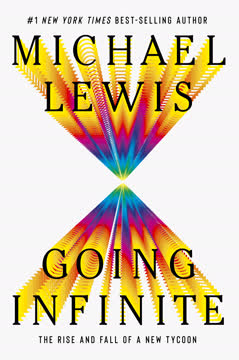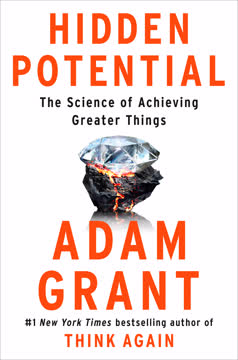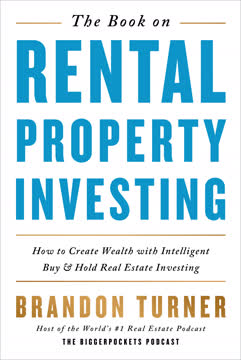Key Takeaways
1. Your Goal: Transition from Laborer to Capitalist
All decisions you make should help move you from being a laborer to being a capitalist.
Understand the transformation. As a laborer, you exchange your work for wages. As a capitalist, your money works for you, generating income through investments like interest, dividends, or appreciation. Retirement requires this shift; your capital must eventually replace your wages.
Labor fuels capital. You start as a laborer to earn income, save a portion, and that saving becomes your investment capital. As your capital grows, the income it generates increases. This journey typically takes 35-40 years, starting in your mid-20s and aiming for financial independence in your mid-60s.
Unifying Question guides. To stay on track, ask yourself before major financial decisions: "Will this financial decision help move me from being a laborer to being a capitalist?" If the answer is yes, you're likely making a good choice aligned with your long-term goal.
2. The Core Tool: Simple Money Ratios
The beauty of Your Money Ratios is that it turns all those mind-numbing financial calculations into simple ratios based on your age and household income.
Simplify complex finance. Personal finance and retirement planning often feel overwhelming due to complex calculations and market volatility. Money Ratios provide a clear, simple framework using only your age and income to guide key financial decisions.
Ratios cover key areas. These ratios offer elegant formulas for managing the four core areas of personal finance:
- Savings
- Debt
- Investments
- Insurance
Benchmark your progress. By comparing your current financial situation to the recommended ratios for your age and income, you can quickly see if you are on track for a secure retirement and make necessary adjustments. This takes emotion out of decision-making, promoting consistent, positive results.
3. Build Your Capital: The Capital to Income Ratio
The CIR is the most important ratio in Your Money Ratios because it provides the framework for your transition from laborer to capitalist.
Target capital accumulation. The Capital to Income Ratio (CIR) tells you how much capital (savings) you should have accumulated at various ages (25-65) to reach the goal of having capital worth about 12 times your income by age 65. This target should allow you to live on roughly 80% of your pre-retirement income.
Calculate your CIR. Find your age in the CIR chart and multiply the corresponding ratio by your gross annual household income. This gives you your target capital amount. Compare this to your actual savings (401k, IRAs, savings/investment accounts, cash value life insurance, business equity - not home equity).
CIR benchmarks progress. The CIR provides clear benchmarks along the path to 12x income. If you're ahead, keep saving. If you're behind, you can increase your savings rate or adjust your retirement expectations (e.g., retire later or on less income).
4. Fuel Your Capital: The Savings Ratio
The irony is that the more you save today, the more you can spend later.
Consistent saving is key. The Savings Ratio indicates the percentage of your pre-tax income you should save annually to meet your CIR benchmarks. This habit is critical for building investment capital.
Target savings rates. The recommended minimum savings rates are:
- 12% of pay before age 45
- 15% of pay after age 45
Compounding accelerates growth. While your savings contributions are important, compound earnings on your capital become the biggest contributor to wealth growth after you reach about two times your annual pay in savings. Over a 40-year cycle, earnings can account for roughly 70% of your total accumulated capital.
5. Manage Your Debt: Use Debt Prudently
If used properly, debt can help you build capital.
Debt categories matter. Not all debt is bad. Income-Producing Debt (reasonable housing, education, transportation) can facilitate earning more income. Income-Reducing Debt (credit cards, excessive amounts of the former) hinders capital accumulation.
Keep debt proportional. Debt must be manageable enough to leave room for your Savings Ratio. The Mortgage to Income Ratio, for example, suggests maximum housing debt (e.g., 2.0x income in early 30s, declining with age) to ensure budget flexibility. Education debt should ideally be no more than 75% of anticipated average earnings in the first 10 years and repaid within that timeframe.
Avoid bad debt. Credit card debt is the worst due to high interest rates, pre-spending future income at a high cost. Auto debt should be minimized as cars are wasting assets; prioritize reliable, less expensive options to free up cash flow for savings.
6. Invest Your Capital: Balance Risk and Return
Losses do more harm than gains do good.
Stocks vs. Bonds. Investing involves balancing risk (potential loss) and return (potential gain). Stocks offer higher potential returns but greater volatility and risk of large losses (50%+). Bonds are safer but offer lower returns.
The Investment Ratio. This ratio provides a recommended allocation between stocks and bonds based on age (e.g., 50% stocks/50% bonds through mid-50s). As you age and accumulate more capital, the allocation shifts towards bonds to protect accumulated wealth.
Manage risk, avoid large losses. A balanced portfolio reduces volatility. A 50/50 stock/bond portfolio significantly reduces the impact of stock market crashes (e.g., a 50% stock drop results in a 25% portfolio drop). Recovering from large losses takes exponentially longer, threatening your ability to retire. Bonds provide defense and a "Plan B" (income from interest) during market downturns.
7. Protect Your Income: Disability Insurance
Most people do not realize that they are more likely to become disabled than to die young.
Insure your income stream. Disability is a significant risk that can halt your ability to earn wages and save, derailing your transition from laborer to capitalist. Disability insurance replaces a portion of your income if you become unable to work.
Disability to Income Ratio. Aim for coverage equal to 60% of your income while working. This benefit is often tax-free, approximating your after-tax working income. As your Capital to Income Ratio grows later in life (reaching 8x-9x pay), you may consider reducing coverage as investment income can supplement.
Secure adequate coverage. Obtain an individual long-term disability policy tied to your specific occupation, ideally with features allowing coverage increases with income and riders for catastrophic disability. Employer group plans are cheaper but often have lower limits, are taxable, and may only cover inability to work in any occupation.
8. Protect Your Family: Life Insurance
In a strictly economic sense, there is no reason for an individual to buy life insurance.
Protect dependents' future. Life insurance doesn't benefit you, but it provides a payment to your beneficiaries upon your death, replacing your lost income stream for dependents (spouse, children). This helps them maintain financial security and continue their journey towards financial independence.
Life Insurance Ratio. The amount needed is generally 12 times your income minus your current Capital to Income Ratio. As your capital grows, your life insurance needs decline. The goal is for the insurance payout plus existing capital to equal 12x your income, providing sufficient assets for your family (estimated to generate ~80% of your prior income, considering reduced expenses and potential Social Security survivor benefits).
Choose term insurance. For most people, term life insurance (covering a specific period, e.g., 20-30 years) is sufficient and more affordable than permanent insurance. It covers the period when your capital is low and dependents rely heavily on your income. Consider policies with a conversion feature to permanent insurance if health issues arise later.
9. Protect Your Capital: Long-Term Care Insurance
The economic cost of aging is the biggest risk to your financial security once you retire and are living off the earnings from your capital.
Insure against aging costs. Long-term care (LTC) covers non-critical health needs like assistance with daily living activities, not covered by traditional health insurance or Medicare. Costs can be substantial ($80k+/year) and deplete capital, threatening your financial security in retirement.
Medicaid is not a plan. Relying on Medicaid for LTC means depleting nearly all your assets to qualify, leaving nothing for living expenses if you recover or for heirs. It's a welfare program, not a retirement strategy.
Calculate your LTC exposure. Determine if your projected retirement income (Investment income + Social Security + Pension) can cover estimated annual LTC costs ($80k/single, $160k/couple). If not, the gap is your insurance need. Purchase inflation-adjusted policies (ideally with a longer benefit period, e.g., 10 years or lifetime) to cover this gap, protecting your capital from extended care expenses.
10. Secure Your Health: Manage Health Costs
Health insurance has the potential to impact your journey from laborer to capitalist more than any other type of insurance.
Health is wealth. Health insurance protects against potentially ruinous medical costs that could wipe out savings. While there's no specific ratio, get the best coverage you can afford until Medicare eligibility.
Understand policy types. Health plans vary in cost and control:
- Indemnity: High cost, high flexibility (rare).
- PPO: Network discounts, moderate flexibility/cost.
- HMO: Restricted network, lower cost, less flexibility.
Manage costs strategically. Understand premiums, deductibles, coinsurance, and co-pays. High Deductible Health Plans (HDHPs) with Health Savings Accounts (HSAs) can offer tax advantages and savings potential for future medical costs if you are generally healthy. Flexible Spending Accounts (FSAs) offer tax deductions for current year medical expenses.
11. Ignore the Noise: Focus on Fundamentals
Ignore most of what Wall Street says, focus on the fundamentals, and you will likely be better off in the long run.
Wall Street's incentives. Wall Street firms profit from transactions. They constantly market new products and strategies, often appealing to fear or greed, to encourage trading and switching investments. This noise distracts from sound, long-term financial principles.
Beware gimmicks and fraud. Be skeptical of promises of excessive returns with no risk, "secret" strategies, or complex products you don't understand. Fraudsters exploit greed and lack of knowledge.
Master doing nothing. Often, the best investment strategy is patience and discipline. Stick to your fundamental plan (the Money Ratios) through market cycles. Avoid chasing "hot" trends or reacting emotionally to short-term volatility. Consistent, prudent decisions over time build wealth.
12. Seek Good Advice: Find Ethical Professionals
If you can locate someone with these three qualities [Technical competence, Independence, Strong ethics], then you have probably found yourself a good advisor.
Individual advice is valuable. While this book provides a framework, a qualified financial advisor can offer personalized guidance based on your specific circumstances and goals in the complex financial landscape.
Key qualities to seek. Look for an advisor with:
- Technical competence: Strong educational background (finance, tax, accounting, law) and significant industry experience (5-10+ years working with clients).
- Independence: Works for you, ideally in a privately held firm, free from pressure to sell specific products.
- Strong ethics: Operates under a code of ethics, puts your best interests first, and has a clean regulatory record (check SEC and FINRA databases).
Find and vet advisors. Seek referrals from trusted sources (family, colleagues, other professionals). Prepare questions about their background, independence, ethics, and how they are compensated. A good advisor is competent, trustworthy, and someone you feel comfortable working with long-term.
Last updated:
Review Summary
Your Money Ratios presents simple financial rules of thumb based on income and age. Readers appreciate its straightforward approach to retirement planning, debt management, and insurance. The book's unique perspective on moving from "laborer to capitalist" resonates with many. While some find it oversimplified, most agree it's an excellent starting point for financial planning. Critics note its limited coverage of credit card debt and potentially outdated information. Overall, reviewers recommend it as a valuable resource for understanding personal finance basics and setting concrete financial goals.
Similar Books










Download PDF
Download EPUB
.epub digital book format is ideal for reading ebooks on phones, tablets, and e-readers.




